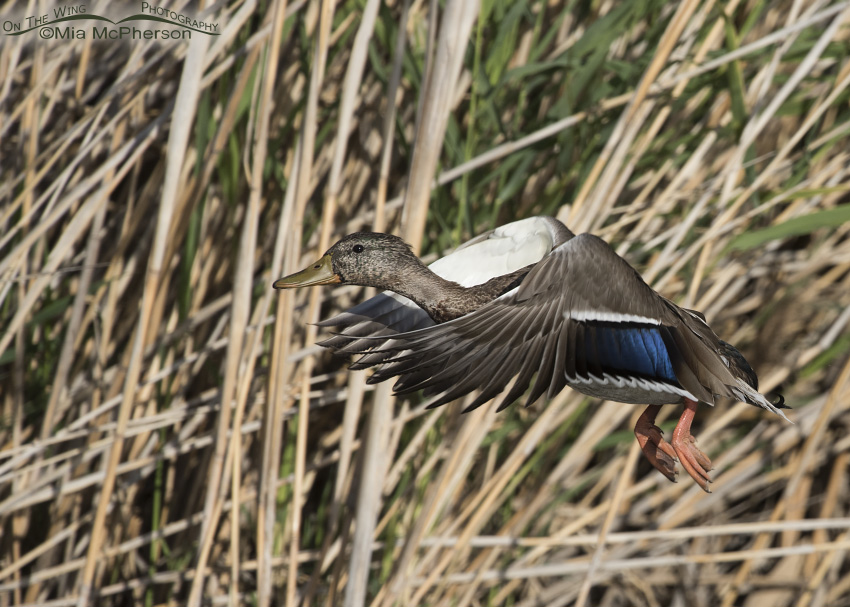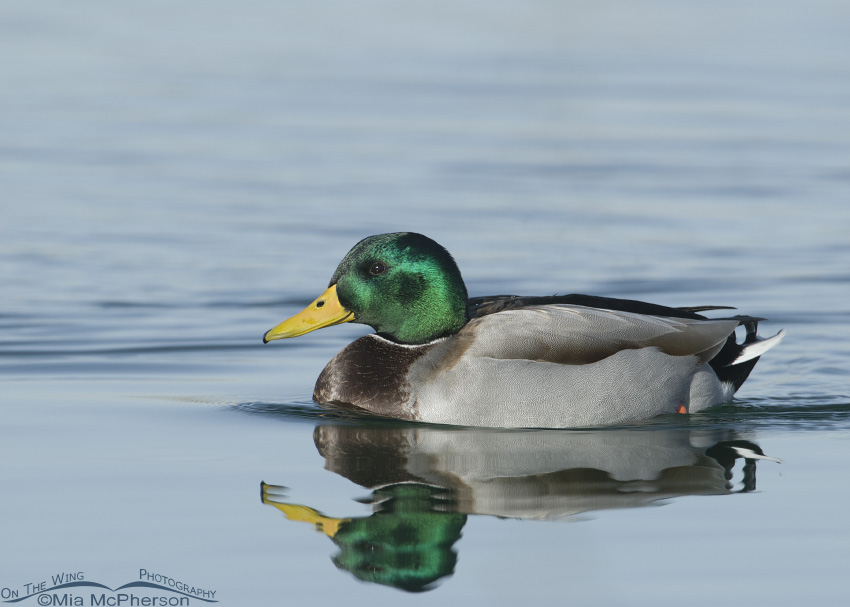 Drake Mallard in eclipse plumage – Nikon D810, f7.1, 1/2500, ISO 500, Nikkor 500mm VR with 1.4x TC, natural light
Drake Mallard in eclipse plumage – Nikon D810, f7.1, 1/2500, ISO 500, Nikkor 500mm VR with 1.4x TC, natural light
Yesterday at Bear River Migratory Bird Refuge I was able to photograph a Mallard drake as it lifted off from the water on the south side of the auto tour loop. A few of the shots were blurry because I had trouble locking onto the duck because of the busy background but I was able to lock on for three shots before the duck flew over the reeds. Once I was able to view the image on my computer monitor I could see a bit of green plumage on the duck’s head and realized this drake is going into breeding plumage.
Drake Mallards do look different in breeding and nonbreeding plumage phases.
 Drake Mallard in breeding plumage – Nikon D200, f8, 1/640, ISO 320, Nikkor 200-400mm VR with 1.4x TC at 400mm, natural light
Drake Mallard in breeding plumage – Nikon D200, f8, 1/640, ISO 320, Nikkor 200-400mm VR with 1.4x TC at 400mm, natural light
Mallard drakes look their fanciest in breeding plumage and by October the drake in the first image will look like the drake above that I photographed in December of 2008 at a pond near where I live. Mallards are in breeding plumage from October until May when they will molt into their drabber nonbreeding plumage.
Yesterday I mentioned that September signals cooler weather for me and these ducks don’t need a calendar to tell them that it is arriving.
Life is good.
Mia
Click here to see more of my Mallard photos plus facts and information about this species.


I trust nature’s calendar a great deal more than ours. And always love ducks. Whatever season.
Thay iridescence is so beautiful and hard to capture. These and Wood ducks are so elegant! Both, real beauties….
Beautiful photos Mia. Love Ducks.
TWO MORE NICE SHOTS MIA…. YOU NAILED THAT MALLARD IN FLIGHT… NICELY DONE.
DO YOU MISS FLORIDA? DID YOU EVER GET A CHANCE TO VISIT THE CIRCLE B-BAR RESERVE
SOUTH OF LAKELAND, FL. LOTS OF GREAT PHOTO OPS THERE….